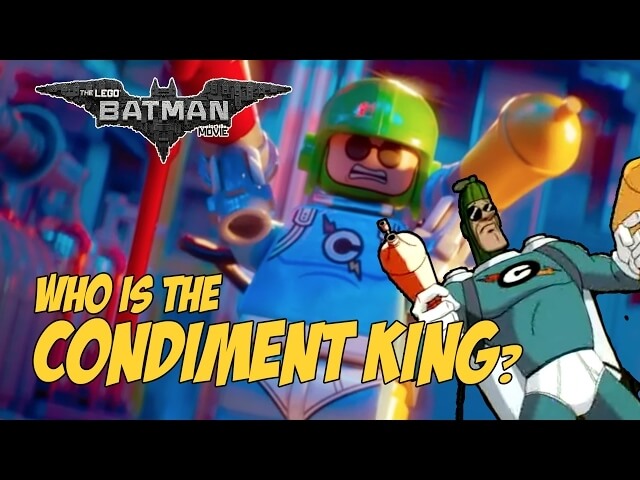Holy obscurity, Batman! Take a look at some of Gotham’s least-memorable villains

This week’s entry: List of Batman family adversaries
What it’s about: Riddle me this, readers: what do you get when you combine birthday cakes, eggs, clocks, hats, hypnotism, gorillas, blimps, and calculators? Only the most colorful rogues’ gallery in comics! For every Joker, Catwoman, or Riddler, Batman has a dozen lesser-known, much stranger villains. We’ll look at some of Gotham’s odder denizens, as corralled into the easily escapable asylum that is Wikipedia.
Strangest fact: There’s a Charlie Brown homage in the Batman archives. 1960 saw the introduction of Charles “Chuck” Brown, known as Kite Man. While one would think his nemesis would be particularly ravenous trees, Kite Man has tangled with Batman again and again throughout the years, usually using a kite to help fly another villain out of prison. However, one of Bill Finger’s sillier creations turned dark in recent decades, as Infinite Crisis sees him thrown off a building for refusing to team up with Deathstroke; in the series 52, he’s killed and eaten by Bruno Mannheim; and DC Rebirth makes him a divorced alcoholic who tries to kill himself after the Riddler poisons his son. Good grief! As Wikipedia bluntly puts it, “he is considered to be one of the worst Batman Villains of all time.”
Thing we were happiest to learn: Batman embraced story arcs very early on. One of his first villains, 1939’s Mad Monk (predating the Joker, Catwoman, and Clayface by a year; Penguin, Scarecrow, and Two-Face would follow in next three years), was featured in Batman’s first multi-issue adventure. It was a wild one, too. The Monk—based in Paris, not Gotham—hypnotizes Bruce Wayne’s girlfriend, Julie Madison, sets a giant ape on Batman, and then throws him into a pit of snakes (Batman uses the Bata-rang for the first time to escape), before revealing that he’s a vampire. Who can also turn into a wolf. Just go with it. Batman kills the vampire with a silver bullet, the traditional bane of werewolves. Wikipedia says, “the use of silver bullets was attributed to writer error.” The Monk didn’t return until 1982, but his red hood hangs in the Batcave to this day.
Thing we were unhappiest to learn: There are way too many villains to cover in one article. But some of the more colorful figures in Batman’s past include Actuary, who uses his math skills for evil; Crime Doctor, a medical doctor who commits crimes; Dummy, a ventriloquist who uses his act to commit crimes; Gorilla Boss, a dead mobster’s brain in the body of a gorilla; Mirror Man and Mirror Master, unrelated villains who commit mirror-themed crimes; Mr. Camera, who has a camera for a head; Mr. Polka-Dot, who turns the polka dots on his costume into weapons; Onomatopoeia, a serial killer who makes word-balloon-type sounds as he fights; Penny Plunderer, who got the electric chair for stealing pennies (the giant penny in the Batcave remains as a memento); Snowman, a half-human/half-yeti; Ten-Eyed Man, who has eyes on each finger but not on his face; and, yes, everyone’s favorite Lego Batman Movie cameo, Condiment King (real name: Mitchell Mayo, because of course it is).
Best link to elsewhere on Wikipedia: If you think Batman has some odd back-bench villains, check out a guy who includes Mister Mxyzptlk, Toyman and a backward version of himself as his A-listers. The list of Superman enemies includes Colonel Future, Emperor Of America, Kuku and Nardu (criminal circus performers who use a robot elephant in their heists), the Laughing Gas Bandits, Professor X (a mob boss who predated Marvel’s X-Men by five years), The Thing From 40,000 AD, and the Rainbow Raider (not, as far as we know, LeVar Burton).
Further down the Wormhole: With a few exceptions, the more than 300 villains on the list call Gotham City home. While DC comics has officially placed Gotham in New Jersey, it tends to be an amalgam of New York and Chicago (both cities, along with Pittsburgh, stood in for Gotham in Christopher Nolan’s films). The Windy City has been the site of some remarkable engineering projects, including reversing the flow of the Chicago River to stop sewage flowing into Lake Michigan, rebuilding after the Chicago Fire, and of course constructing what was once the tallest building in the world. But no project was as surprising and expansive as the raising Of Chicago, when streets, sidewalks, and buildings were physically raised higher. We’ll raise many, many roofs next week as we celebrate the 200th Wiki Wormhole.